|
Beginning July 1, 2020, applications to reissue individual air permits must be completed through the MPCA’s online service (e-Service). The application form is available now, and several applications have been successfully submitted. Sign up today!
Benefits
Online submission makes permitting reviews faster by streamlining processes and decreasing data entry through populating forms with permitting data, thereby reducing the time required to issue air quality permits.
Getting started
First-time users of air quality e-Services should go to the MPCA’s Air permit forms and online submittals webpage for help getting started. The forms page has links to all available air e-Services, instructions on setting up an account and getting facility access, and a list of information needed for each page in the e-Service. Once in the e-Service, users will have access to help files for every page and field. If the help files do not have the information you need, contact the MPCA at onlineservices.pca@state.mn.us.
An e-Services account can be created at any time. Existing users can use the same account for reissuance applications that they already created for individual air administrative amendment applications.
According to Minnesota Rule 7002.0016, the Minnesota Pollution Control Agency (MPCA) is not able to refund application fees. This is documented and explained in the Statement of Need and Reasonableness (SONAR) for Amendments To Rules Governing Air and Water Emission Permit Fees, 2009.
In reference to Minn. R. 7002.0016, subp. 1 which includes that “Fees are nonrefundable,” the SONAR states:
“The MPCA believes that it is reasonable to decline refunding of [application] fees, because the expenses related to the review and processing of the application or any additional activities do not change as a result of the outcome of the review. The outcome of the fee is to ensure resources are available for the work effort… It is reasonable to establish in this Subpart the understanding that the fees provided to cover that effort will not be refunded.”
The statutes below and the SONAR, which was part of the public rulemaking process and contributed to the development of Minn. R. 7002.0016, were considered in this determination. It was determined that the enabling intent was that application fees are nonrefundable. It was not an oversight to include language in Minn. R. 7002 related to refunds to allow for application fees but only allow for unique cases related to additional fees and annual fees.
State rules address air quality permit fees and refunds in the following manner:
|
Fee type
|
Citation in rule
|
Ability to refund if in error?
|
|
Application fees
|
7002.0016
|
No
|
|
Additional fees
|
7002.0023
|
Yes
|
|
Annual fees
|
7002.0075
|
Yes
|
In alignment with the statements above, the air permit application submittal cover page (SCP-01) form has been corrected. This correction affects applications subject to SCP-01 Section 3E. Before, Section 3E allowed for previously paid application fees to be applied to resubmittal applications, resulting in a partial refund. This will no longer be the case. No credit will be given for previously paid application fees.

Following recent developments at the federal level, the additional time in the rulemaking process is necessary for the MPCA to update our regulatory analysis. On March 31, 2020, the U.S. EPA published the final Safer Affordable Fuel Efficient Vehicles rule, which rolls back the existing federal greenhouse gas emissions standards for light-duty vehicles. The final SAFE rule is substantially different from the rule proposal published in 2018, so the MPCA must therefore update our analysis based on this final regulation. The delay will allow the MPCA to incorporate the new federal emissions standards into our analysis, and also analyze potential implications of the current economic downturn resulting from the COVID-19 pandemic.
Going forward, MPCA will continue to work with the Office of Administrative Hearings to determine when and how public hearings can be held. Despite the delay, the agency remains committed to this rulemaking and our goal of reducing emissions of greenhouse gases and other air pollutants from transportation. To stay up to date on the rulemaking, sign up for emails on the Clean Cars Minnesota website.
|

Air Quality Awareness Week (AQAW) is a nationwide air quality and health educational campaign led by EPA. Each year, EPA chooses new themes for the week-long event. The theme for 2020 is "Better Air, Better Health." The MPCA, the Minnesota Department of Health, and other organizations throughout Minnesota and across the nation will be celebrating this year's AQAW from May 4 through 8.
The daily themes for AQAW 2020 are:
- Monday, May 4: Wildfires & smoke
- Tuesday, May 5: Asthma & your health
- Wednesday, May 6: Where's your Air Quality Index (AQI) coming from?
- Thursday, May 7: Air quality around the world
- Friday, May 8: Air quality educational resources
To keep up with clean air messages, check out EPA's Air Aware website, the MPCA's air quality index webpage, and the MPCA's pages on Facebook and Twitter. Be sure to follow your favorite MPCA meteorologists on Twitter (@mpca_aqi) for some fascinating Minnesota-specific information.
|
Data indicates that social distancing actions taken due to the COVID-19 pandemic have had an impact on air quality worldwide. Satellite imagery has shown a significant decrease in nitrogen dioxide pollution throughout Europe and Asia now compared to before the start of the pandemic, as countries have taken actions to limit the spread of the coronavirus. In the United States, there has also been a significant improvement in overall air quality in cities that implemented stay-at-home orders early such as New York and Los Angeles.
 In Minnesota, there has been a slight improvement in overall air quality since the statewide stay-at-home order was implemented on March 27, but less noticeably than in other places, in part due to variable weather over the past month and smoke from prescribed fires in other states. Overall air quality in Minnesota is generally good, so there is less room for improvement than in other states and countries that are experiencing noticeable differences. Neighborhood air quality is still affected by local activities such as recreational fires and essential businesses.

Average fine particle (PM2.5) concentrations measured at several air monitoring sites in Minnesota from March 28 (the day Minnesota’s stay-at-home order went into effect) to April 19 for 2015-2019 and 2020. Fine particle levels in late March and early April are mostly unchanged in 2020 compared to previous years.
|
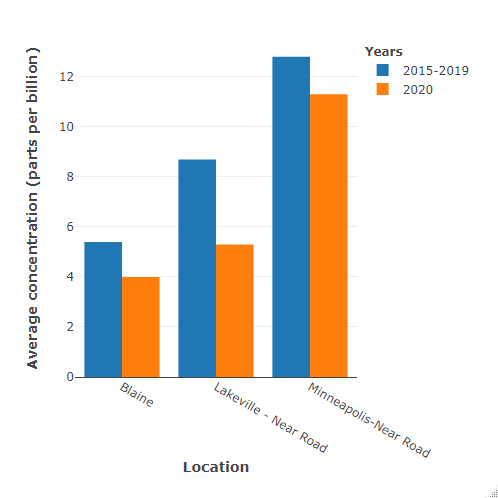
Average nitrogen dioxide (NO2) concentrations measured at air monitoring sites in Minnesota from March 28 (the day Minnesota’s stay-at-home order went into effect) to April 19 for 2015-2019 and 2020. NO2 levels in late March and early April are slightly lower in 2020 compared to previous years.
|
Although you have probably heard that it’s the 50th Anniversary of Earth Day, you may not know that 2020 also marks the 50th Anniversary of the original Clean Air Act.
At the time it was promulgated, the Clean Air Act was a novel environmental law that brought sweeping changes to the environmental policy and regulatory landscapes. Since promulgation, the Act has been the cornerstone of air quality work in the U.S. Thanks to it, the U.S. has seen drastic and lasting reductions in the emissions and ambient concentrations of several pollutants known to have significant health impacts, including lead, sulfur dioxide, nitrogen dioxide, and mercury.
Every state does its part to help uphold the Clean Air Act, and Minnesota has long been a clean air leader. Although Minnesota is meeting national and state air quality standards, we know that we have more work to do for those among us who are disproportionately affected by the air pollution we do have. To learn more about what the MPCA is doing to help improve air quality, visit our website.
For more history on the Clean Air Act, visit EPA’s website.

Ethylene oxide (EtO) is a flammable, colorless gas used to make other chemicals that are used in making a range of products, including antifreeze, textiles, plastics, detergents, and adhesives. It’s also used to sterilize equipment and plastic devices that cannot be sterilized by steam, such as medical equipment. EtO is also used in fumigation of spices and manufacturing of products.
EPA updated its human health risk guidance for EtO, reflecting newer science showing the gas is more carcinogenic (cancer-causing) than previously thought. EPA has recently been working with industry and state, local, and tribal air agencies to reduce risks from this chemical. Facilities in Minnesota are not high-emitters of EtO compared to those in other states, but we can do more to reduce its emissions.
Keep an eye out for grant opportunities to reduce or eliminate EtO emissions in Minnesota. MPCA’s business assistance unit encourages you to sign up now on our website so you can receive timely notice when these grants open. We expect to begin seeking requests for proposals later this spring.
|
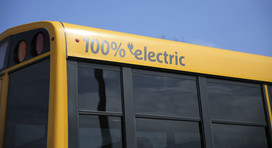
Based on our experience with earlier grants and public input we received over the past year, the MPCA developed the Phase 2 Plan for distributing $23.5 million during the next four years. In February 2020, the Phase 2 Plan was finalized, sent to the settlement trustee, and published online.
Compared to the first two years of grant programs, the MPCA is substantially increasing investment in all-electric technology by spending more than $15 million to support organizations making the switch to electric vehicles (EVs), including $7+ million for heavy-duty EVs like trucks and transit buses, $4.7 million for electric school buses, and $3.5 million for EV charging stations. Another $8.2 million will help purchase cleaner heavy-duty on-road vehicles, off-road equipment, and school buses that use a variety of fuel types. Including cleaner burning diesel, propane, and compressed natural gas in our grant programs allows businesses and communities across Minnesota to purchase the vehicles that best fit their budgets and local needs while reducing emissions. Overall, the grant programs in Phase 2 are estimated to reduce emissions of nitrogen oxides by 4,110-6,975 tons, fine particle pollution by 145-444 tons, and greenhouse gases by 64,074-94,848 tons.
To read the full plan and sign up for future grant announcements, visit our VW website.
|

The Minnesota GreenCorps member application will open soon! Minnesota GreenCorps AmeriCorps members serve with government entities, non-profit organizations, and educational institutions to carry out service projects in areas of air pollutant reduction, community readiness and outreach, green infrastructure improvements, and waste reduction, recycling, and organics management.
GreenCorps members serve full-time for 11 months, from September to August. In addition to receiving training, developing job skills, and gaining professional experience, members earn a stipend and an education award upon successful completion of their service term.
“Minnesota GreenCorps was the perfect opportunity to apply my degree and work with a community that believes in the importance of environmental sustainability, while also networking with others in this field and building a solid foundation of relevant work experience.” – 2018/2019 Minnesota GreenCorps member
Visit the MPCA’s Minnesota GreenCorps webpage to learn more!
|
Clean Air Minnesota is a coalition of businesses, non-profit organizations, and governments that work together to achieve reductions of air pollution through voluntary and collaborative efforts. Clean Air Minnesota is facilitated by Environmental Initiative. The Minnesota Public Health Association highlighted the work of Clean Air Minnesota as part of its Environmental Health topic during National Public Health Week. Check it out on their website. Learn more about Clean Air Minnesota and how to get involved on the group’s webpage and read on to learn about recent projects and accomplishments:

Project Green Fleet
Project Green Fleet connects owners of diesel vehicles and equipment with funding to help them replace their older, higher-emitting equipment with newer, cleaner versions. Replacing this equipment with modern technology is one of the most cost-effective ways to reduce emissions. Project Green Fleet is wrapping up work on three EPA Diesel Emission Reduction Act (DERA) grants and projects funded through the first phase of the MPCA’s VW Settlement grants. Check out this video about a recent City of St. Paul project replacing several of their old vehicles and equipment. Learn more about Project Green Fleet on the project webpage.
|
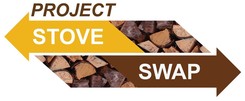
Project Stove Swap
Project Stove Swap helps provide funding for low-income Minnesotans to replace older, less-efficient wood stoves with newer, cleaner models. Replacing wood stoves not only improves community air quality, but is also particularly important for improving indoor air quality and safety. Working in close partnership with non-profits, local businesses, and tribal organizations across Northern Minnesota, over the past two years Project Stove Swap changed out 322 wood-burning appliances across 17 counties, contributing to $1.9 million in economic activity and emissions reductions of over 56 tons of particulate matter, 30 tons of volatile organic compounds, and 222 tons of carbon monoxide. Next, the program is turning its attention to the Twin Cities metro area. Learn more on the project webpage.
|

Project Clean Air Repairs
Clean Air Minnesota recently started operating Project Clean Air Repair (CAR), which is helping to fix some of the most polluting vehicles on Minnesota roads. Some studies indicate that the dirtiest 25% of on-road vehicles may cause 50-90% of vehicle air pollution. Project CAR is currently working with The Lift Garage in South Minneapolis, Cars for Neighbors in Anoka County, and the Leech Lake Band of Ojibwe in Cass Lake to identify vehicles serviced at their facilities that had outdated or broken emission controls or exhaust systems. The program provides funding to offer repairs to these systems for low-income drivers at low or no cost. Learn more on the project webpage.
|
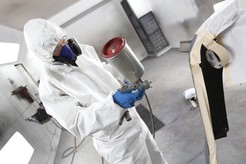
Clean Air Assistance Project
This effort continues to help work on neighborhood-scale emission-reduction projects across the state. The program helps connect small businesses with funding and technical resources that will reduce emissions in their facilities, protecting the health of their employees and neighbors. Clean Air Minnesota is currently collaborating with Ramsey County to reduce the use of harmful chemicals and related technologies at businesses in the county, such as dry cleaners, auto body shops, industrial painters, and printers. Learn more on the project webpage.
|

On April 21, 2020, the American Lung Association (ALA) released their 2020 State of the Air report, which describes nationwide and state-by-state air quality using data from 2016, 2017, and 2018. The report focuses specifically on ground-level ozone and fine particle pollution, as these pollutants are the primary drivers for air quality in the U.S.
The ALA found that, at the national level, ground-level ozone and fine particle concentrations have increased relative to past years. Because of this increase, millions more Americans have been exposed to air pollution and the potentially harmful effects of those pollutants. According to the ALA, half of us live in places where the air is considered unhealthy.
Unlike previous reports, the ALA identified the impacts of climate change as one of the key drivers of the worsening air quality trend. Without addressing issues due to climate change, it will be hard for the U.S. to continue what had been a long-term trend of air pollution reduction.
The state of Minnesota did better overall than the national trend for both fine particles and ozone. Most counties in Minnesota (for which monitoring data were available) were graded at A or B for both pollutants, with Wright County graded at C for ground-level ozone. Explore the county-level air monitor and population data on the ALA’s Minnesota Report Card webpage.
For more information and to read the full report, visit the ALA website. Check out data and trends for Minnesota’s ground-level ozone and fine particle monitoring on the MPCA’s website.
|
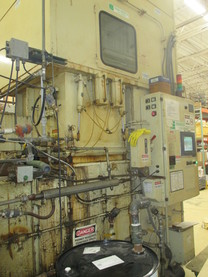
The Minnesota Technical Assistance Program (MnTAP) is continuing to offer no-cost assistance to large and small Minnesota businesses seeking to eliminate trichloroethylene (TCE) from their processes. The ongoing TCE Alternatives Project provides participating businesses with free testing and technical assistance to help find a safer solvent or cleaning system that meets their process needs. Join the increasing number of companies that are avoiding TCE’s many health, environmental, and regulatory concerns by eliminating this hazardous solvent from their facilities.
If you are unsure if there is TCE at your facility, MnTAP can provide confidential assistance by remotely reviewing your facility’s permits and products used. If you have off-the-shelf products such as brake cleaner and electronic or energized parts cleaners, you can email product names and/or pictures, and MnTAP staff can help determine whether they contain TCE. If TCE is found, MnTAP can offer assistance to help your facility find an effective, safer alternative that will improve air quality and employee safety.
If you have questions about TCE use at your facility or if you want to see if there may be safer alternatives for your current process, contact Jane Paulson (janep2@umn.edu, 612-624-1826).
|
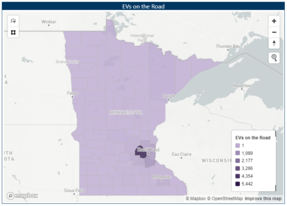
The Minnesota Department of Transportation recently published an update to its Electric Vehicle Dashboard with data through early 2020. The dashboard shows the distribution of plug-in electric vehicles across the state. There are EVs registered in every county in Minnesota, demonstrating that EVs can be part of the solution to reduce greenhouse gas emissions and other air pollutants all across the state. To learn more about EVs and their emissions benefits, visit the MPCA’s EV webpage.
|
Researchers recently published a study examining the relationship between deaths from COVID-19 and long-term exposure to air pollution. The study looked at COVID-19 death rates and fine-particle levels across 3,000 counties in the U.S. The researchers adjusted for a variety of other variables including population size, hospital beds and socioeconomic status, among others. The study found links between long-term exposure to fine particles and COVID-19 death rates that indicate a small increase in long-term exposure may lead to a large increase in COVID-19 death rate. Read the study on Harvard University’s website and an article about the research at the New York Times.
On April 30, EPA and the National Highway Traffic Safety Administration published in the Federal Register the final version of a new rule for greenhouse gas emissions and fuel economy standards for passenger vehicles through model year 2026, called the Safer Affordable Fuel Efficient (SAFE) Vehicles Rule (85 FR 24174). The rule requires a 1.5% annual improvement in emissions and fuel economy. The final rule is different from the proposed rule published in 2018, which would have frozen the standards at 2020 levels through 2026. The SAFE rule is also significantly less stringent than the rule it replaces, which was finalized in 2012 and required a 5% emission reduction annually through 2025. The SAFE rule and the related regulatory analysis are posted on EPA’s website.
The MPCA, Minnesota Department of Transportation, and Minnesota Department of Heath participated throughout the rulemaking process and have strongly opposed this rule change, which will substantially reduce critical environmental protections. The agencies’ comments on the rule proposal can be found on the MPCA’s website.
On April 16, EPA issued its final Supplemental Cost Finding for the Mercury and Air Toxics Standards (MATS), and rescinded its earlier finding that it is “appropriate and necessary” to regulate hazardous air pollutants (HAPs), including mercury, from coal-fired power plants under Section 112 of the Clean Air Act. A pre-publication version of the Supplemental Finding can be found on EPA’s website; it has not yet been published in the Federal Register.
MATS is a national emissions standard for HAPs that establishes emission limits for coal-fired power plants. In this final Supplemental Cost Finding, EPA significantly reworked the cost/benefit analysis of its 2016 Supplemental Cost Finding developed in response to a Supreme Court ruling related to the 2012 MATS. Departing from standard practice, the new analysis does not include co-benefits of reducing other air pollutants, such as fine particles. This change led EPA to conclude that benefits from controlling HAPs did not justify the cost of regulating them at power plants. However, EPA did not delist the source category from regulation nor did the agency repeal MATS. All Minnesota power plants are in full compliance with MATS.
In the same action, EPA also made final its risk and technology review for coal-fired power plants. EPA has determined the risk remaining after implementation of MATS is acceptable, and that there are no new developments in emission controls, therefore additional requirements are not warranted.
When EPA proposed its new analysis in 2019 (84 FR 2670), the MPCA commented that EPA’s reworked cost/benefit analysis is flawed and must be revised to account for real benefits from controlling particulate matter, to update health impacts, and to take into account that actual costs of compliance were far lower than initially estimated. Adopting EPA’s approach, ignoring benefits that arise from controlling particulate matter in addition to HAPs, overemphasizes program costs to regulated industries while overlooking significant public health benefits. The MPCA’s concerns were not addressed in the final action. Read the MPCA’s comment letter here.
On April 14, EPA announced it will not propose any changes to the current National Ambient Air Quality Standards for fine particles (PM2.5) or coarse particles (PM10). The NAAQS are standards for air pollution levels that all parts of the country must meet. They are set to protect human health, the environment, and property.
The Administrator of the EPA made the decision to retain the existing standards based on his interpretation of the information found in EPA staff’s Policy Assessment and commentary from the Clean Air Scientific Advisory Committee. The Policy Assessment is a part of the NAAQS review process where EPA staff provide analysis that bridges the gap between the agency’s scientific reviews of air pollution’s effects on human health and how those studies might guide the decision to revise the NAAQS or keep them at existing levels.
The proposed rule announcing no action has not yet been published in the Federal Register. The proposal will be open for comment for 60 days after it is published in the Federal Register. EPA is planning to finalize the current PM NAAQS review process by December 2020. More information about the Administrator’s decision, including the pre-publication version of the review, is available on EPA’s website.
To learn more about PM and its health effects, visit the MPCA’s website.
On April 20, EPA published the final draft of the Integrated Science Assessment for the ozone NAAQS (85 FR 21849). The assessment, part of a standard NAAQS review process, provides the scientific basis for EPA’s decisions on whether or not to revise the current NAAQS.
As with the particulate-matter NAAQS review, EPA is moving to have final review of the ozone NAAQS completed by December 2020. To learn more about the current ozone NAAQS review, go to EPA’s website.
To learn more about ozone and its health effects, visit the MPCA’s website.
On March 18, EPA published a supplemental notice of proposed rulemaking (85 FR 15396) regarding a previously proposed rule, “Strengthening Transparency in Regulatory Science” published on April 30, 2018 (83 FR 18768(. The purpose of the supplemental notice was to make “clarifications, modifications and additions to certain provisions” of the original rule proposal. Visit Regulations.gov to review the rule proposal. The public comment deadline has been extended to May 18, 2020.
When the original rule was first proposed in 2018, the MPCA and MDH worked together to review the proposal and provide comments to EPA. The rule proposal was regarded by the environmental health and policy communities as overly vague and dangerous to air quality and other environmental standards, particularly those determined by the review of human health research. The Commissioners of MPCA and MDH travelled to Washington, D.C. to provide testimony at the EPA’s public hearing for the proposed rule. To see MPCA’s and MDH’s comments from 2018, go to MPCA’s website.
The March 18 supplemental notice of proposed rulemaking, though intended to improve on the prior proposal, did not address the concerns of the MPCA and MDH. For that reason, the two agencies have provided additional comment on the supplemental notice. Among other issues, the agencies reiterate our concerns that the rule is unnecessary, weakens privacy protections, and does not consider current efforts to improve data transparency. The agencies also repeat their request for EPA to withdraw the proposal. A copy of the agencies’ comment letter will be available in the rulemaking docket at Regulations.gov and on the MPCA’s website listed above.
Air Mail is a quarterly, email-based newsletter featuring updates on air quality issues and the work of the MPCA and our partners. Subscribers to this list also receive Air Mail Bulletins, which provide time-sensitive regulatory and technical updates.
To see past issues, Air Mail Bulletins, or to subscribe, visit the MPCA's website.
If you have questions or comments about Air Mail, please contact Amanda Jarrett Smith at amanda.smith@state.mn.us.
|